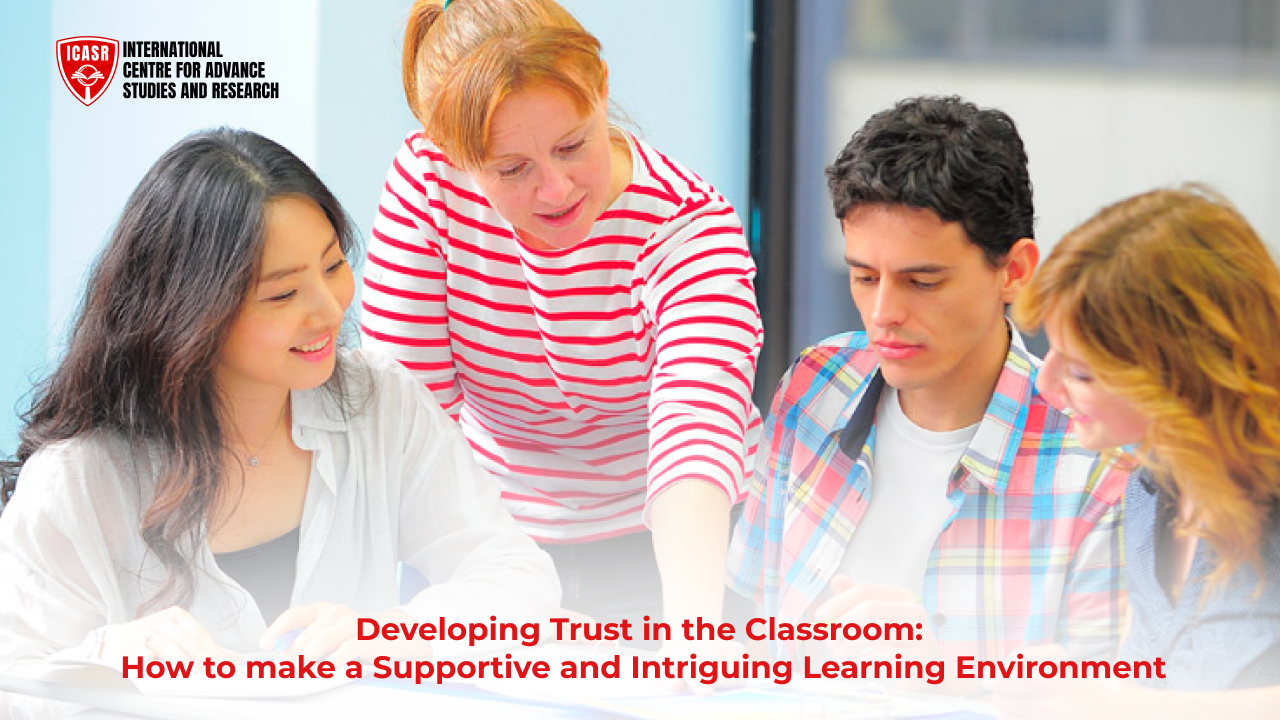The Power of Trust: Why it Matters
- Improved Engagement: Students who trust their teacher are more likely to be effectively included in lesson discourses and exercises.
- Boost Performance: When students feel heard and safe, they are more open to learning and hold data superior.
- Development of Basic Aptitude: Students are more likely to explore thoughts openly and challenge suspicions in a supportive environment.
- Enhanced Soci-Emotional Learning: Trust cultivates a sense of having a place and association, helping students construct positive connections with peers and instructors.
Building Bridges: Strategies for Fostering Trust
- Understand Your Students: Allocate some hours to understand the specific needs, interests, and learning approaches of your students is important. You can achieve this through introduction games, and face-to-face talks during the initial months in school.
- Model trusty Behaviour: Let your students see that you care about their opinions and do not neglect their voice in the classroom.
- Celebrate Mistakes as Learning Opportunities: Replace punishment with growth. Instead of them understanding themselves better or expressing their own opinion well. Moreover, give every participant enough room for expression without discrimination or favouritism shown against any one particular group.
- Be Attentive to Your Learners: Always be there for your learners in case of anything at school or even around town; attend to their fears immediately upon notification by providing personalized assistance.
Fostering Community: Building a Strong Classroom Culture
- Team-building activities: These activities aim at making students work on problems together and also understand each other better.
- Diversity and Inclusion: Celebrate the diversity in your classroom and establish a conducive learning environment in which everyone feels comfortable and respected. Adopt inclusive practices in your discussion and curriculum.
- Students' Choice and Voice: Integrate choices for learners, allowing them to participate in making decisions about how they learn. This might mean giving them the freedom to select their topics for projects, ways of presenting information or even research subjects.
- Conflict Resolution Skills: Help students develop positive conflict resolution skills so that they can manage disagreements respectfully.
Inclusive Education: Ensuring Everyone Feels Valued
- Differentiation: Make the way you teach so it fits different types of learning and different students' needs, by having a variety of materials, learning tasks, and tests.
- Universal Design of Learning (UDL): Universal Design of Learning refers especially to guidelines or philosophy which may promoted through proper instruction aimed at serving diverse interests gaming learners even as it seeks ways of distinguishing other portals of entry into instruction. This connection between different ideas about how students become interested in, recognize, and take action in learning environments cannot easily be destroyed. However, one may argue that this link must have been forged before today when the use of UDl was first brought to light.
- Representation: Share information in different forms. This suits various learning styles enabling all students to access the content.
- Action and Expression: Students should be provided with a variety of ways they can demonstrate what they learned and understood. This could include written assignments, presentations, projects, or creative activities. Through UDL students get an opportunity to display their strengths and what they know in a manner that connects with them thereby building trust.
Cultivating a Habit for Learning
- Integrate Projects-Based Learning: Students can research subjects that interest them in more detail with project-based learning. it encourages teamwork, problem-solving and analytical thinking.
- Guest Speaker and Field Trips: Have guest speakers demonstrate their expertise or trips to museums, historical sites of interest or anything that own eyes and become very curious about them.


